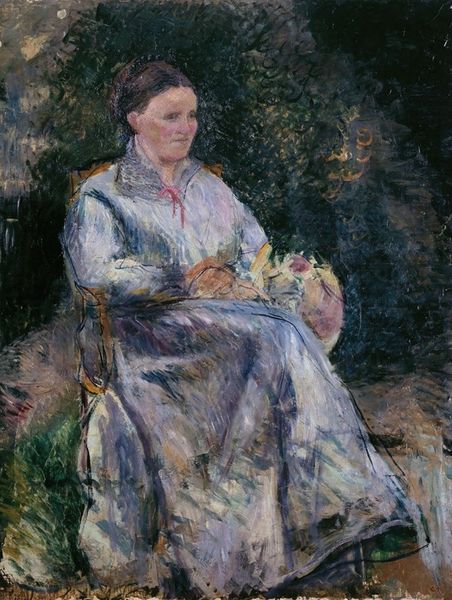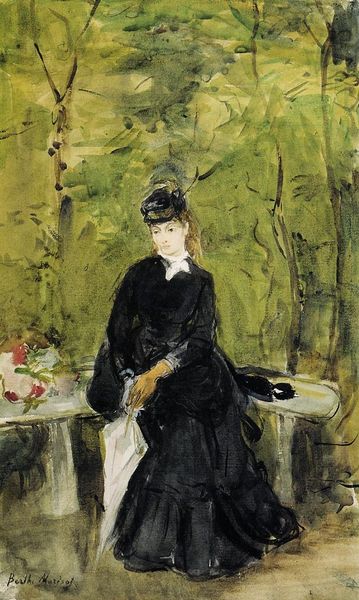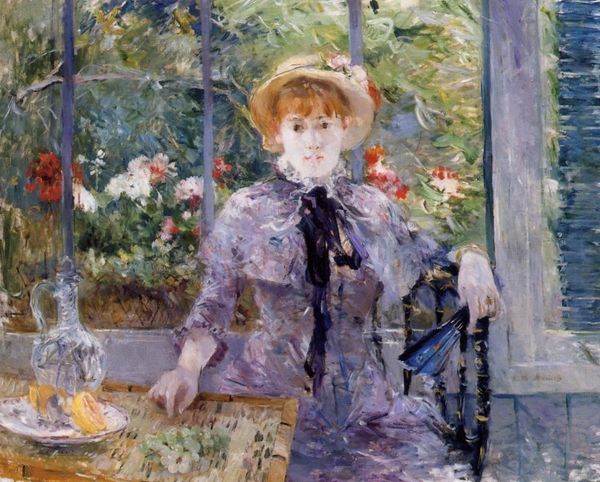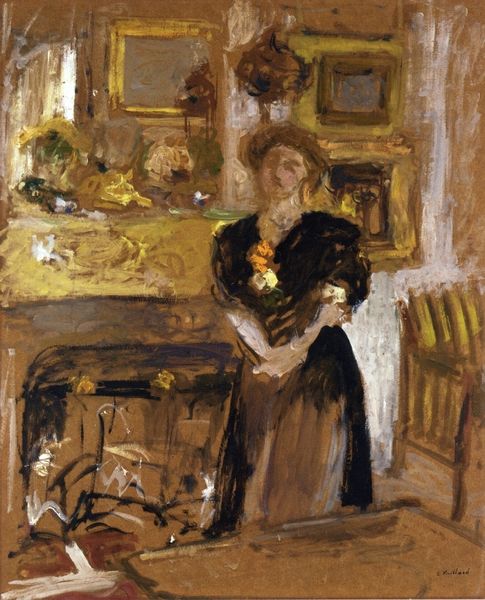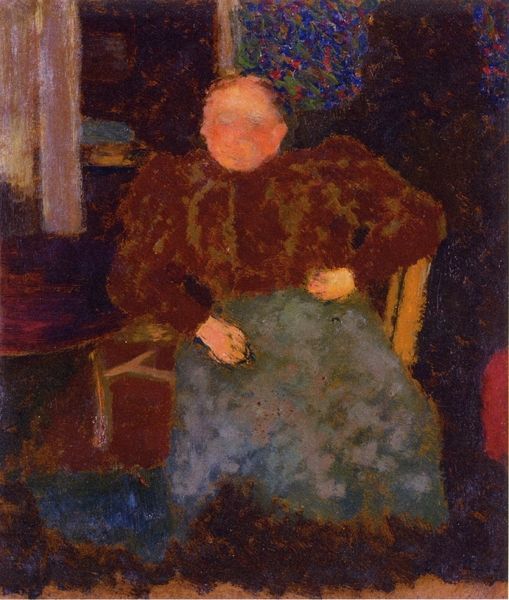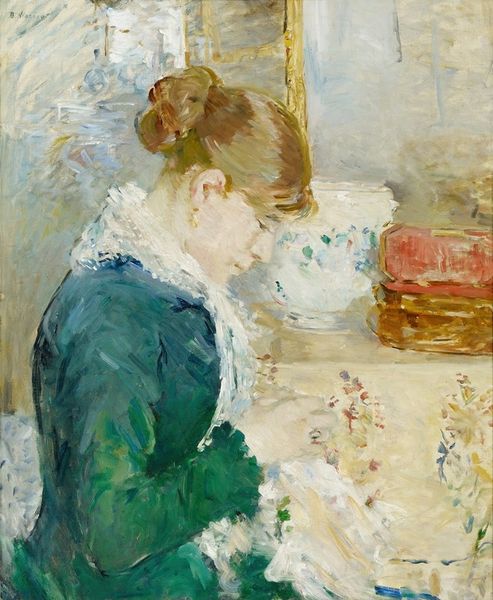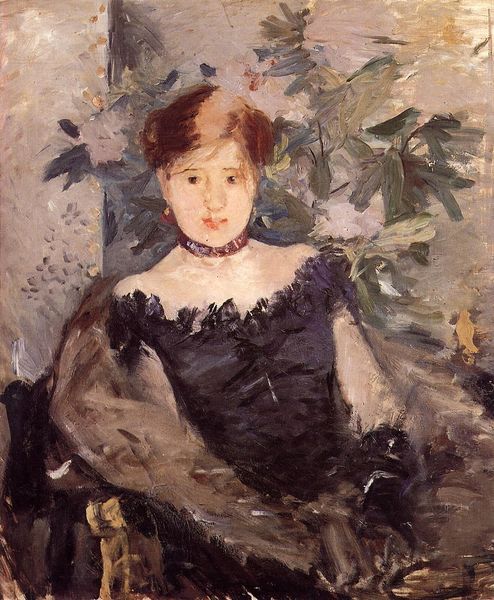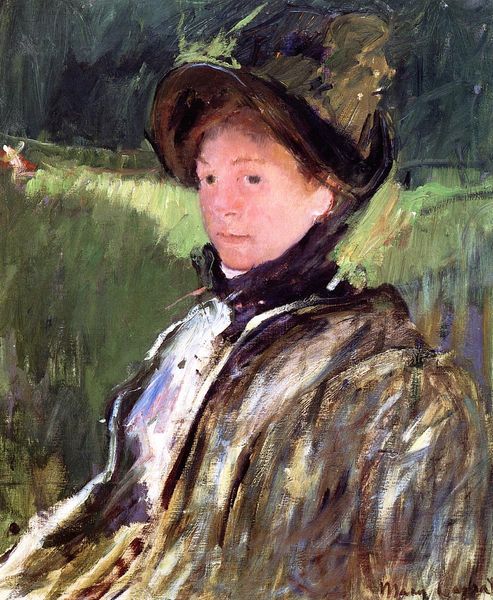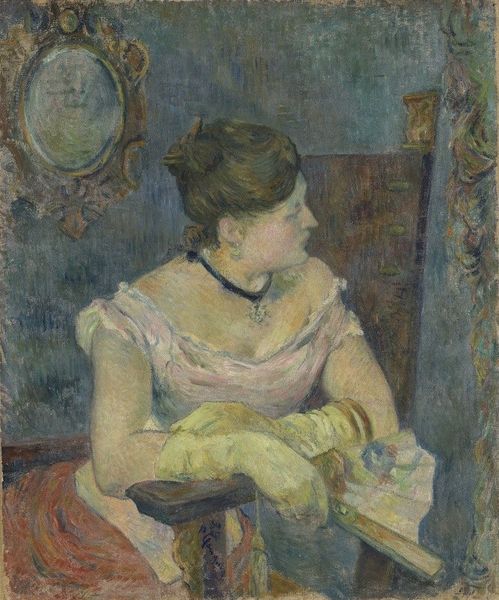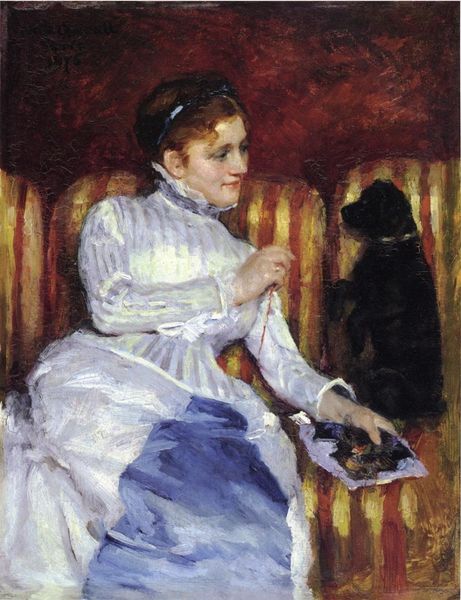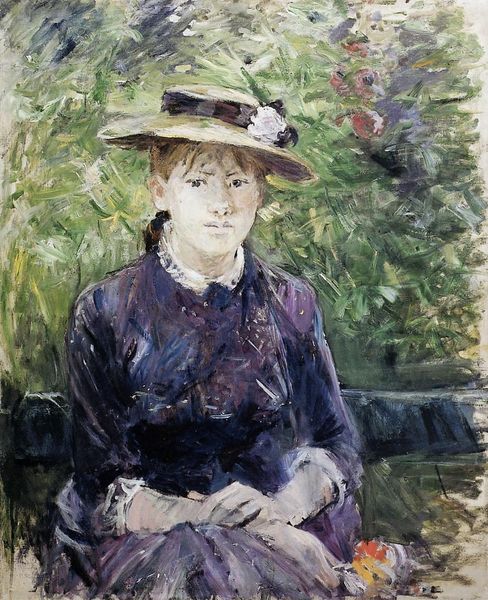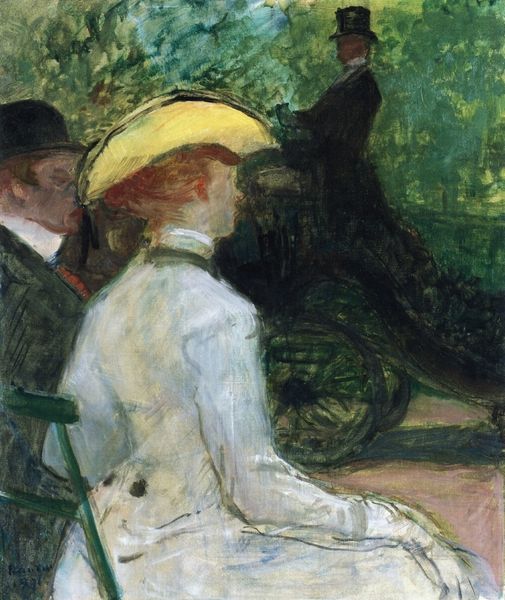
Dimensions: 86.3 x 100 cm
Copyright: Public domain
Curator: Immediately striking is the quiet melancholy of the sitter in Edouard Manet's “Madame Manet in the Conservatory," completed in 1879. It’s an oil painting where his wife is depicted amid a cascade of green foliage and blossoms. Editor: It feels heavy somehow, muted and weighted. You can feel the stifling of Victorian society. I’m interested in her closed off posture. Do you think her tight clasp of her hands reflects the societal constraints on women during this period, especially wives? Curator: Undeniably. Manet's use of loose brushstrokes— particularly in rendering the flowers and background, creates a sense of transience, reflecting the fleeting nature of Impressionism. But look closely: it’s more than aesthetic preference; he's questioning the labour itself! Editor: Ah, I see what you mean! Is he questioning the conventions surrounding portraiture for bourgeois women by denying us clear detail, as well as the expected glamour, drawing attention to how these expectations conceal labour? How women and art are created as objects? Curator: Precisely. Consider his technique: notice the deliberate juxtaposition of rough strokes on her clothing against smoother touches defining her face. This tactile interplay foregrounds his manipulation of oil paints— a statement about how artworks themselves are constructed. He wants the viewer to question production, who does that work and under what constraints, and ultimately who profits? Editor: In terms of identity politics, could the setting itself, the conservatory, a constructed artificial, controlled green space stand in for women's roles in society? I'm really drawn to the complex interplay of inside versus outside represented by the lush flora. I suppose the point here, from my perspective, is this feels less a tender portrait and more of a sharp statement regarding bourgeois constraint and labour? Curator: Indeed. What we're viewing here extends beyond surface and affect: he is really pushing what can be expected from materials in his critique of societal norms through portraiture, creating tensions both literally, in the impasto, and figuratively, by raising so many questions about access, production and ownership. Editor: Absolutely. This makes the painting intensely interesting. The tension and constraint apparent makes this more than a pleasant genre painting and into a piece pregnant with complexity regarding the human condition.
Comments
No comments
Be the first to comment and join the conversation on the ultimate creative platform.
